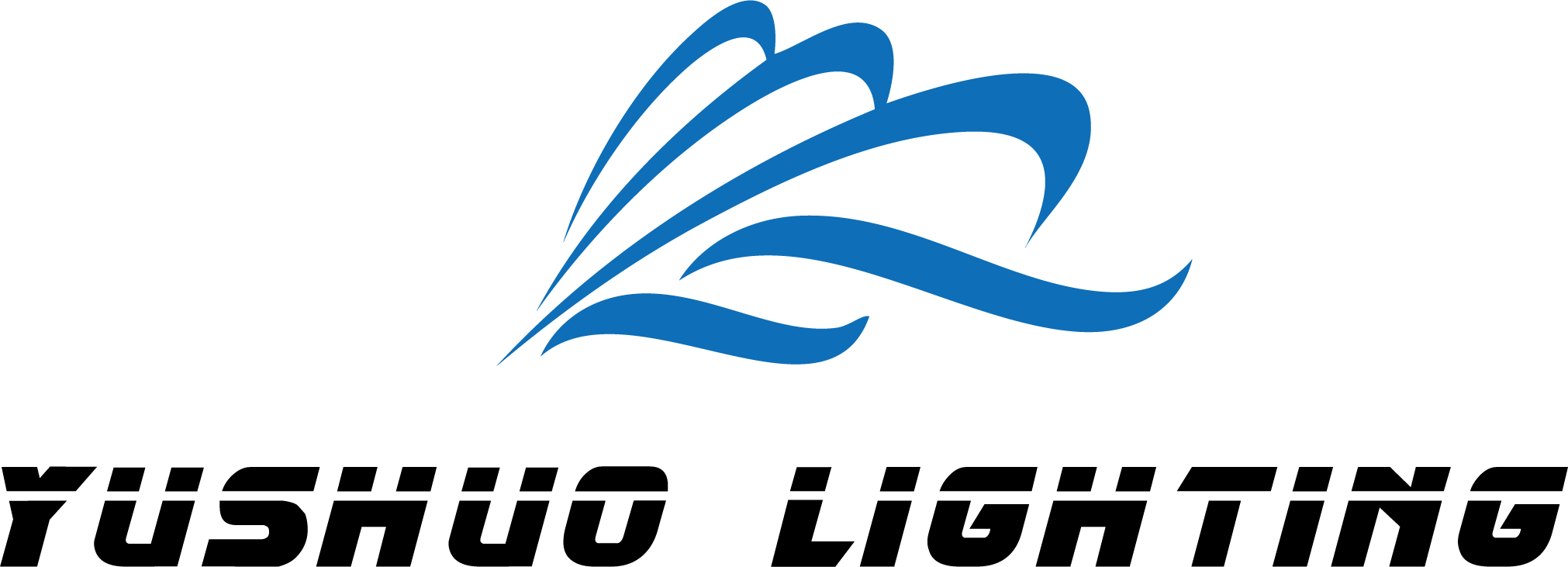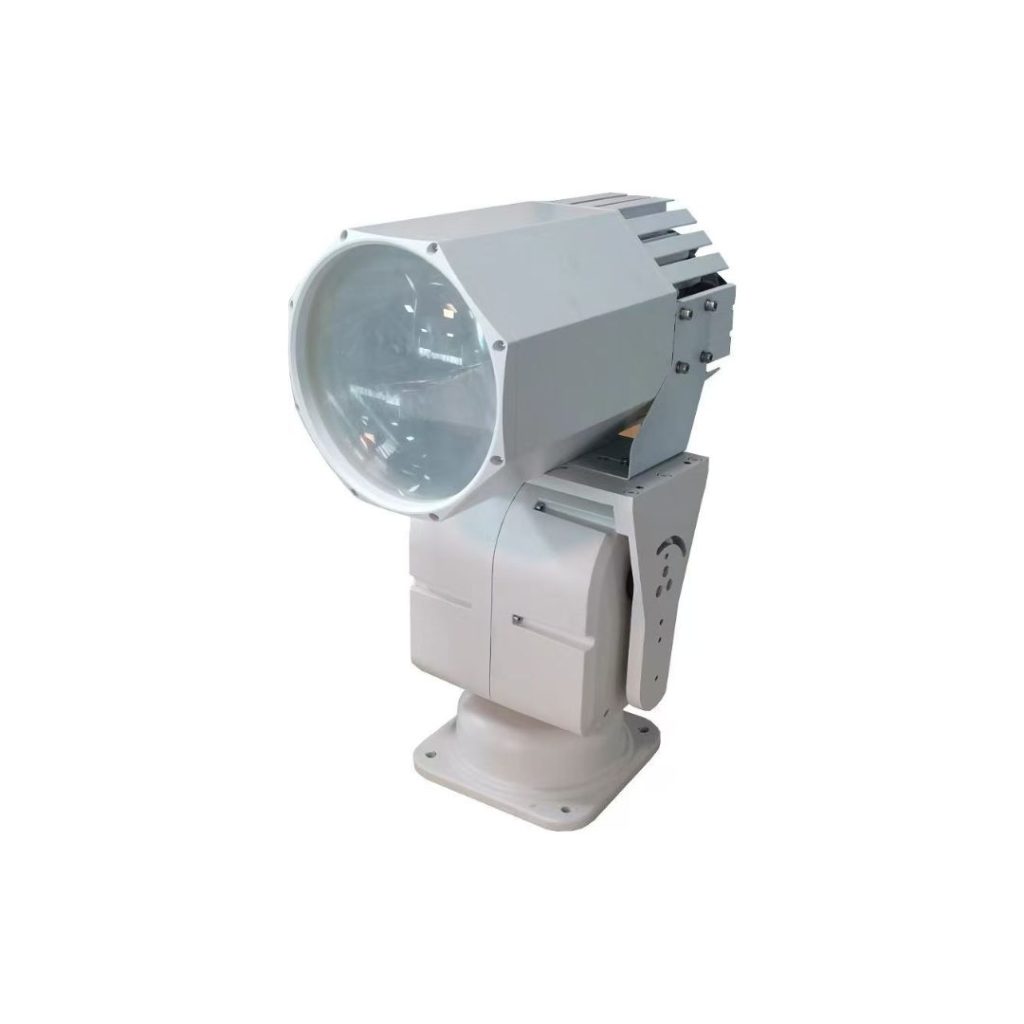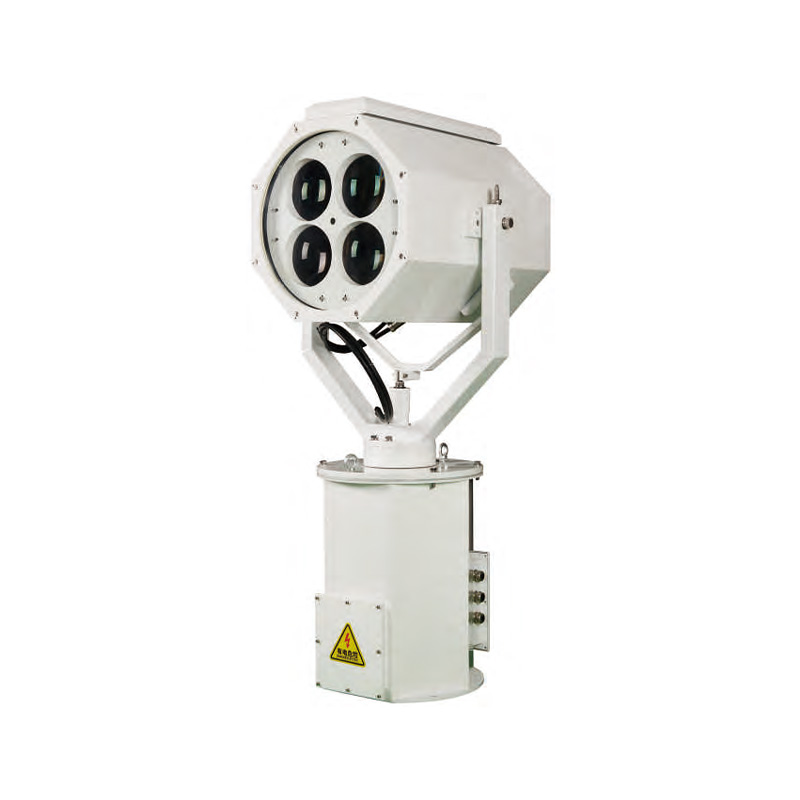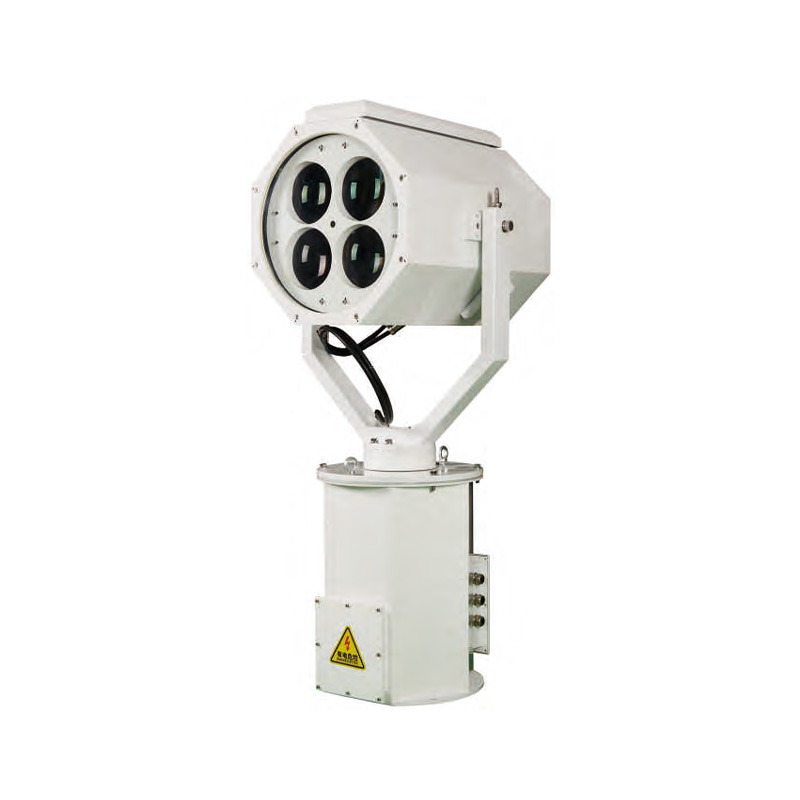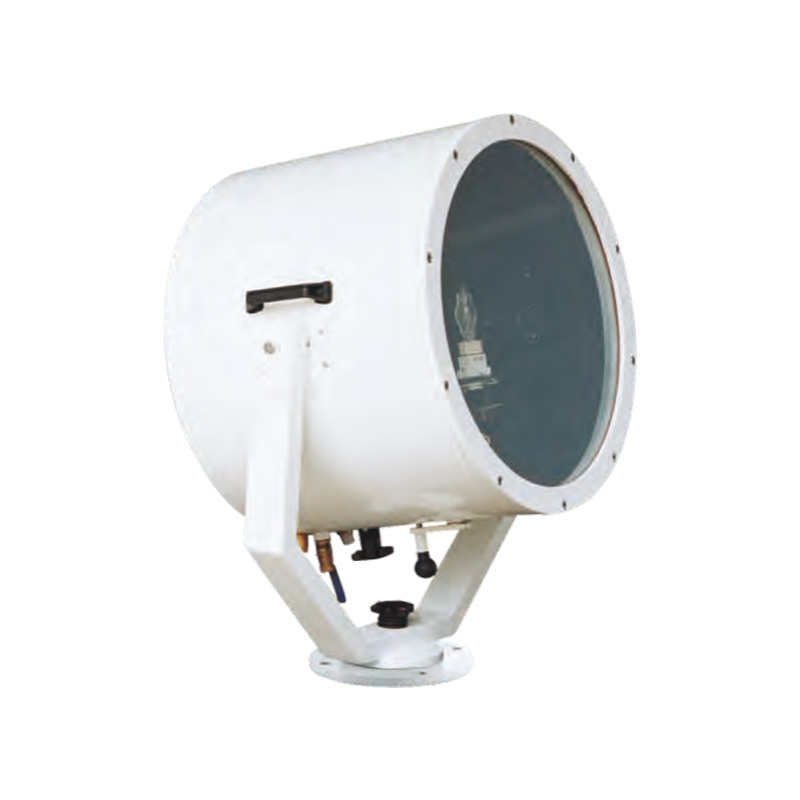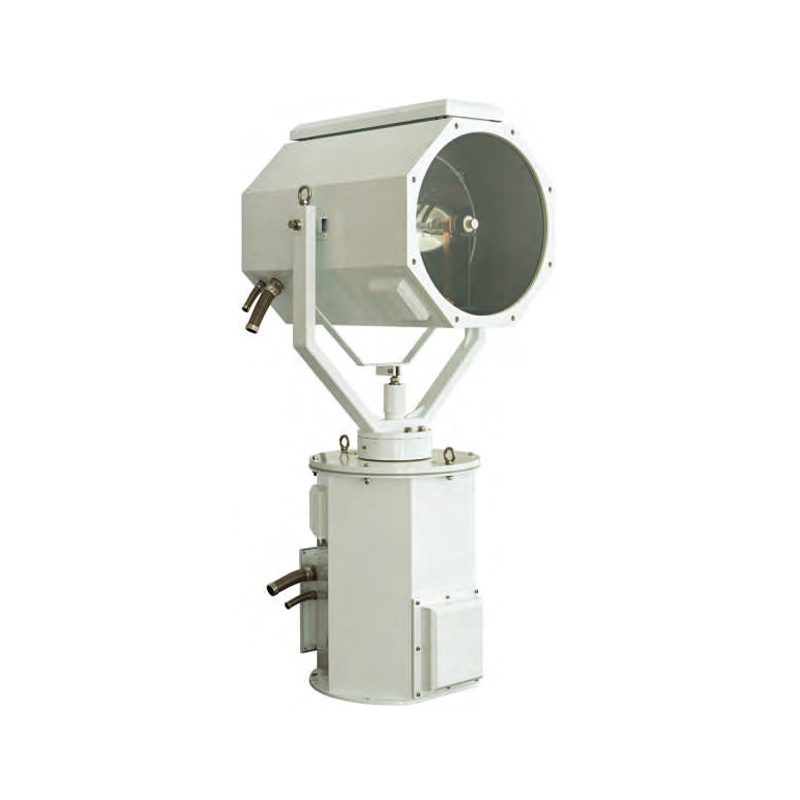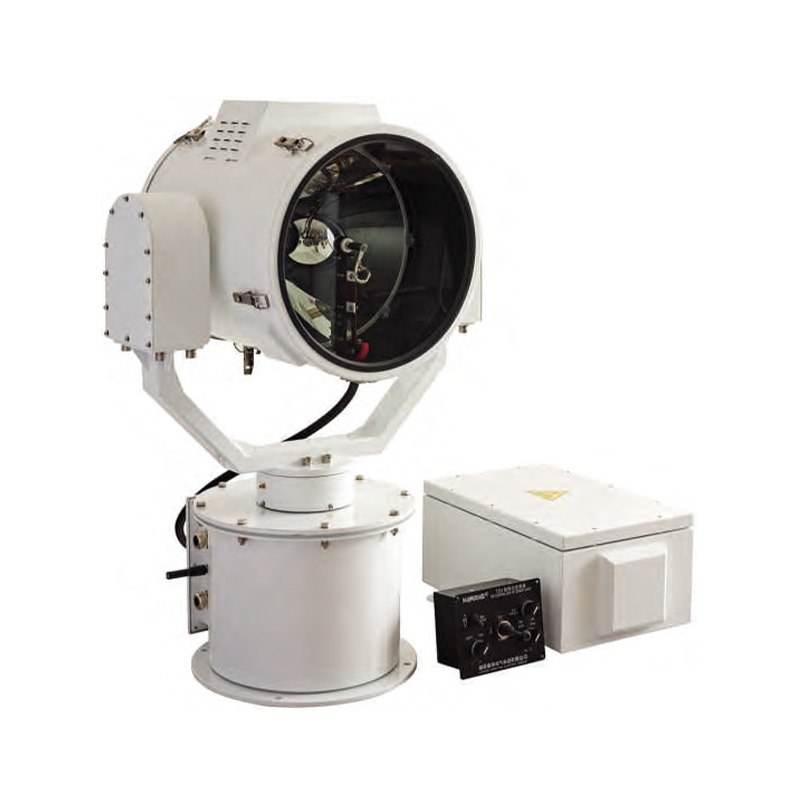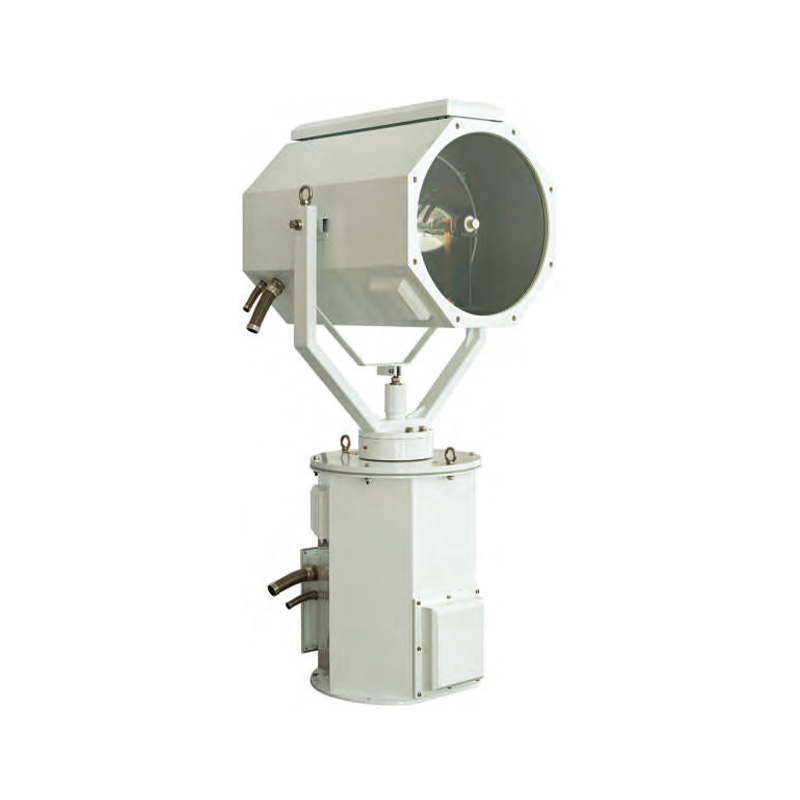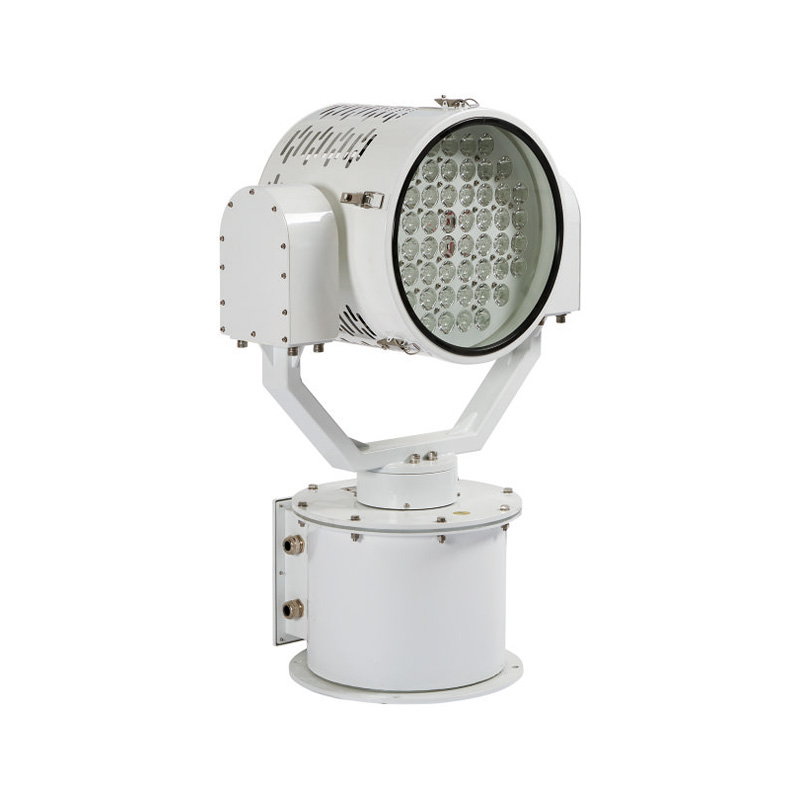How Marine Search Light Beam Angle Affects Navigation Safety
Sight is an important tool when a ship is navigating at night or in heavy fog. A marine search light is one of the most important devices used to ensure maritime safety. Its features are numerous, yet beam angle is the greatest when it comes to effectiveness.
Table of Contents
The Role of Beam ControlWhat Is Beam Angle
Beam angle is the spatial extent to which light spreads from a given point. Essentially, its width and narrowness. A cone of light with a narrow beam angle extends further with greater concentration. A wide beam angle permits illumination of a large area; however, the intensity of light diminishes. The intended purpose and desired lighting effect will determine the selection of beam angle.
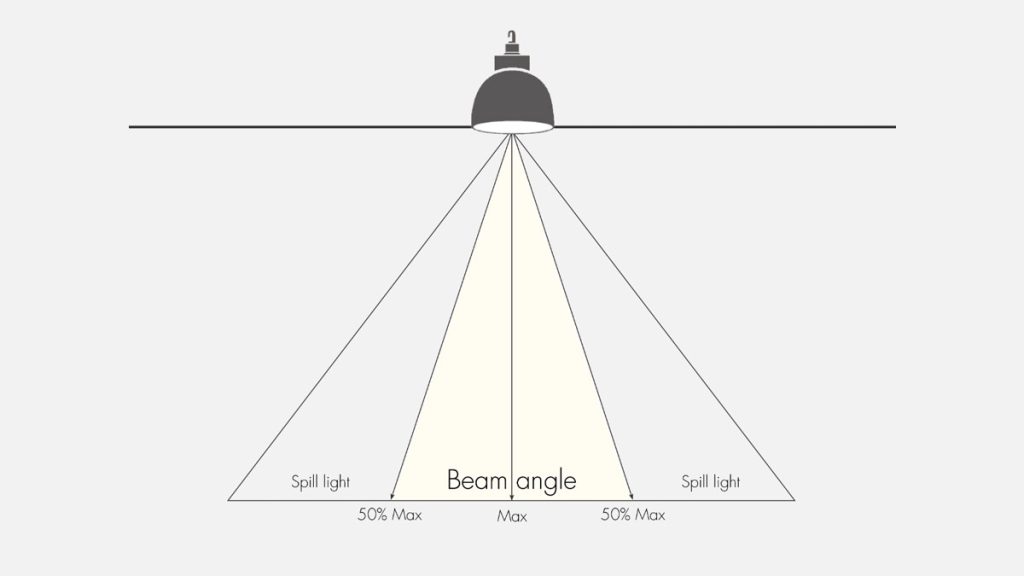
Narrow Beam Angle vs. Wide Beam Angle
| Aspect | Narrow Beam Angle | Wide Beam Angle |
| Obstacle Detection | Shines farther to detect distant objects (ships, lighthouses, icebergs); allows early reaction to avoid collision. | Illuminates a larger close-range area; helps detect buoys, small boats, hidden rocks—ideal for ports and narrow waterways. |
| Positioning & Direction | Enables precise lighting of reference points; helps maintain accurate navigation and course alignment. | Offers a broad environmental view; improves understanding of coastlines or nearby islands to avoid errors. |
| Signal Communication | Sends focused signals to specific targets (other ships or shore stations); improves communication accuracy. | Covers a wider area; useful in search and rescue to attract attention and indicate ship location. |
| Glare Consideration | High intensity may cause glare; careful aiming and brightness control needed to avoid disturbing others. | Light spreads evenly, reducing glare risk and preserving visibility for surrounding vessels. |
| Energy Efficiency | Requires more power for long-distance lighting; may affect ship’s overall power usage and system load. | Uses lower power to light larger areas; better energy efficiency for long-term night operations. |

Correctly Select the Beam Angle to Improve Navigation Safety
Different lighting requirements apply for distinct navigation situations. For instance:
- Open sea night navigation: One must look for spar buoys, underwater obstructions, or vessels that may be moving on the surface. This requires a narrow beam marine search light with a 10°-20° angle and supporting long-range vision.

- Port approaching or leaving: When a ship is docking or performing night operations, monitoring the ship’s perimeter becomes crucial. In these cases a 40°-60° wide beam light is more effective for observing large areas.

Many modern marine search light systems are already equipped with dual beam systems or marine search lights with adjustable beams and zoom functions. This way, you can change beam modes to suit your needs at any time. For example:
- Before entering the fishing port: A narrow angle search light is ideal to inspect the channel from a distance.
- When approaching the dock: Wide-angle lights should be activated at once to provide illumination of the bow and both sides for safe berthing guidance.
Also, when selecting a marine search light, picking one with an adjustable beam angle can minimize energy waste. Concentrated illumination enhances light efficiency while reducing the power load and increasing the life span of the lamp. These features have, in particular, strengthened the ability to ensure navigation safety in the aspect of usability and cost-effectiveness. To “see far enough and illuminate wide enough” in various conditions, professional crew members and ship owners often rationally combine lamps with different beam angles. This goes beyond a mere lighting tactic; it is vital for safe nighttime navigation.
Wrong Beam Angle Selection Can be Dangerous
Choosing the wrong beam angle can directly compromise navigation safety, especially in the following scenarios:
Excessively Wide Beam Causes “False Brightness Effect”
The light may look bright at first, but the coverage can be limited to a certain distance. Because the illumination is focused to a particular spot, operators may be tricked into thinking there are no obstacles in their way, when in fact there are many hidden objects that cannot be seen. This effect is particularly dangerous while driving through shallow waters or buoy-filled regions as one may tend to miss critical markers and floating hazards during night time.
Overly Narrow Beam Creates Blind Spots
Penetration ability of light can be quite important but in this case with extremely narrow beams, it fails when it comes to dock, night anchoring, or even during vessel resupply. Keeping the narrow beam light focused on the vessel makes lower portions and side areas to be left without illumination making it extremely dangerous as vessels, piers, and other equipment can go undetected leading to collision.
Poor Performance in Extreme Weather
For areas with heavy rainfall and fog, wide beam lights drop in usefulness. For every type of scatter like glare or “whiteout”, there’s often a heavy combination of water and fog particles that blind everything in sight. In these situations, only high-intensity, narrow beam lights can focus enough energy to pierce through the weather and clearly reveal what lies ahead
Disruption in Crew Functioning
Crew performance can be hindered by inappropriate beam angles. For instance, when searchlights illuminate a white deck or railings, it may result in excessive glare which can lead to visual strain or temporary blindness. During long night shifts, even slight vision complications can be crucial and the wrong beam angle aggravates the likelihood of such problematic reflections.

Choose the Right Marine Search Light to Sail Safe
Today’s modern marine search lights have evolved significantly. The features offered in new models include remote control operation, glare protection, and adjustable beam angles. Upgrades like these enhance navigational safety and improve convenience.
To enhance sailing safety, the proper marine search light must be selected. Consider the following questions:
Can I adjust the beam angle?
Adjustable lights let you switch between wide and narrow beams depending on your needs. This flexibility helps you see clearly whether you’re sailing in open water or docking in a crowded harbor.
Does the light match my vessel type and use case?
A small fishing boat, a large cargo ship, and a patrol vessel all have different lighting needs. Make sure the searchlight you choose fits your vessel’s size and operational demands.
Is the light suited for the conditions I often sail in?
If you often sail in fog, rain, or at night, you need a light with strong beam focus and weather resistance. If you mostly operate near shore or in ports, a wider beam may work better.
When you take time to answer these questions, you make a smarter choice. You get a lighting setup that works for your vessel, your environment, and your crew. In the end, a well-chosen marine searchlight helps you sail safe—day or night, near the coast or far from it.
Conclusion
In maritime navigation, the beam angle of a marine search light is an important factor regarding safety. Carefully considering whether a narrow beam is preferrable for distance detection, or a wide beam is better for nearby illumination can significantly enhance your ability to sail safe. The beam angle is of course not the only factor that needs to be taken into consideration. Proper maintenance of the marine search light and properly training the crew members on its use are just as vital. Taking all reasonable decisions while exercising all precautions may aid in safer navigation on the water.
